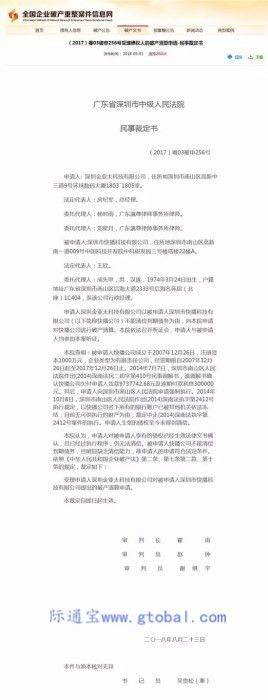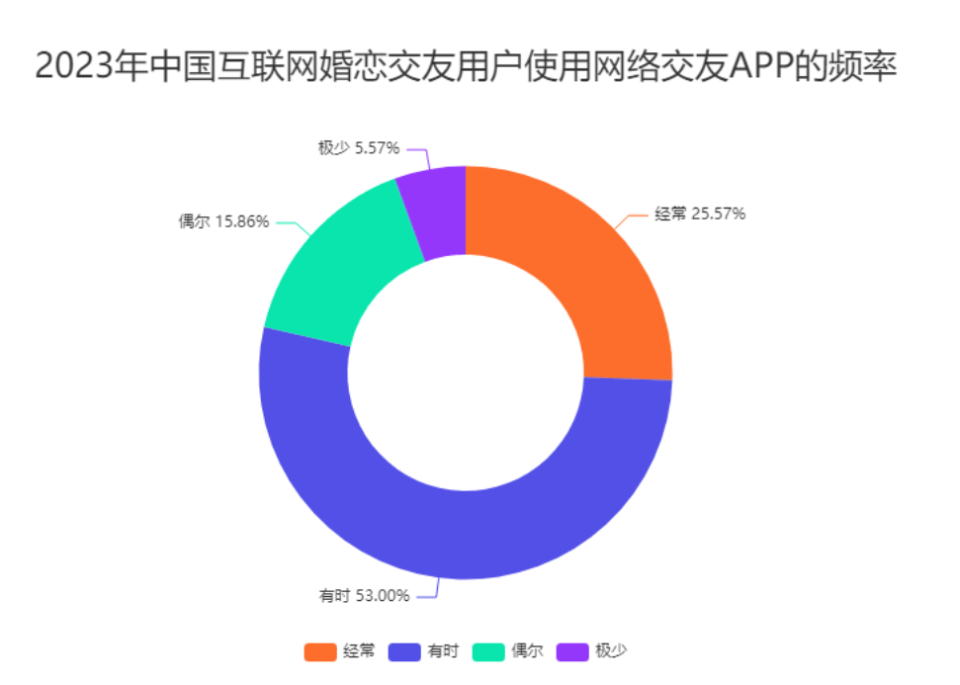分布式搜索引擎01
Mysql:
关系型数据库: 数据在存储时数据和数据之间有一定的关联关系
存储介质(存储位置): 硬盘
优点: 不会导致数据丢失,有事务控制
缺点: 执行消息低
事务控制
redis:
非关系型数据库: 数据在存储时数据和数据之间没有关联关系
存储介质(存储位置): 内存
优点: 执行效率高
缺点: 可能会导致数据丢失
ElasticSearch:
非关系型数据库的一种,主要用于快速搜索
存储介质(存储位置): 内存
优点: 可以实现海量数据的快速搜索(检索)
缺点: 占用内存空间较大
作用: 用来代替Mysql的查询,提高查询效率
数据库排行榜:
https://db-engines.com/en/
分布式搜索引擎01
-- elasticsearch基础
课堂代码
Kibana-DSL
# ES启动后,相当于启动了一个web项目(微服务),通过RestFul风格的路径操作即可
# 通过DSL操作ES:
# 在此处发送RestFul风格的请求携带Json格式的数据就可以操作ES了
# 标准请求路径: http://192.168.163.141:9200/_search
# 因为我们在运行Kibana容器时,设置了ES地址,所以前面的路径可以省去不写
# 向 _analyze 路径发送请求,可以实现对文本进行分词
# ES默认分词器: standard(标准分词器)
# ES分词器对中文不友好
GET /_analyze
{
"text": "黑马程序员学习java太棒了!!!",
"analyzer": "standard"
}
#=================== 自定义分词器--IK分词器 ===================
# 安装IK分词器插件,直接将ik文件夹存放到 ES插件数据卷中即可
# IK分词器有两种分词类型
# ik_smart : 分词时不会出现相同的字
# ik_max_word : 最大分词,将文档中所有的词都分析出来
POST /_analyze
{
"text": "黑马程序员学习java太棒了!!!",
"analyzer": "ik_smart"
}
POST /_analyze
{
"text": "黑马程序员学习java太棒了!!!",
"analyzer": "ik_max_word"
}
#=============扩展词条=======
POST /_analyze
{
"text": "传智播客奥力给!!!",
"analyzer": "ik_max_word"
}
#=============停用词条=======
POST /_analyze
{
"text": "刘德华好帅呀!!!",
"analyzer": "ik_max_word"
}
#====================索引库操作=======================
# 创建空索引库
PUT /heima
# 创建带有 映射关系的索引库
PUT /heima
{
"mappings": {
"properties": {
"info":{
"type": "text",
"index": true,
"analyzer": "ik_max_word"
},
"email":{
"type": "keyword",
"index": false
},
"name":{
"properties": {
"firstName":{
"type": "text",
"index": false
},
"lastName":{
"type": "text",
"index": false
}
}
}
}
}
}
# 修改索引库: 通过修改索引库添加新字段
# 注意: 索引库一旦创建不能修改索引库名称和内部字段
PUT /heima/_mapping
{
"properties":{
"age":{
"type": "integer"
}
}
}
# 查看索引库
GET /heima
# 查看索引库的映射关系
GET /heima/_mapping
# 删除索引库
DELETE /heima
#====================文档操作================
# 添加文档数据
POST /heima/_doc/1
{
"info":"黑马程序员Java讲师",
"email":"zy@itcast.cn",
"age": 38,
"name":{
"firstName":"云",
"lastName":"赵"
}
}
# 修改文档数据
# 全量修改: 覆盖式的修改(内部先删除,再添加)
PUT /heima/_doc/1
{
"age": 138,
"name":{
"firstName":"云",
"lastName":"赵"
}
}
# 增量修改: 只修改想要修改的字段,其他资源不动
POST /heima/_update/1
{
"doc":{
"email":"zy@itcast.cn"
}
}
# 查看文档数据
GET /heima/_doc/1
# 删除文档数据
DELETE /heima/_doc/1
索引库操作
package cn.itcast.hotel;
import cn.itcast.hotel.constants.HotelConstants;
import cn.itcast.hotel.pojo.Hotel;
import org.apache.http.HttpHost;
import org.elasticsearch.action.admin.indices.delete.DeleteIndexRequest;
import org.elasticsearch.action.support.master.AcknowledgedResponse;
import org.elasticsearch.client.RequestOptions;
import org.elasticsearch.client.RestClient;
import org.elasticsearch.client.RestHighLevelClient;
import org.elasticsearch.client.indices.CreateIndexRequest;
import org.elasticsearch.client.indices.CreateIndexResponse;
import org.elasticsearch.client.indices.GetIndexRequest;
import org.elasticsearch.client.indices.GetIndexResponse;
import org.elasticsearch.cluster.metadata.MappingMetaData;
import org.elasticsearch.common.xcontent.XContentType;
import org.junit.jupiter.api.AfterEach;
import org.junit.jupiter.api.BeforeEach;
import org.junit.jupiter.api.Test;
import org.springframework.boot.test.context.SpringBootTest;
import java.io.IOException;
import java.util.Map;
@SpringBootTest
public class HotelDemo1RestApiIndex {
private RestHighLevelClient client = null;
// 创建索引库
@Test
public void createIndex() throws IOException {
//1.创建请求语义对象 (本次请求ES要干什么)
//1.1 创建请求语义对象
CreateIndexRequest request = new CreateIndexRequest("hotel");
//1.2 描述请求携带的参数
request.mapping(HotelConstants.MAPPING_TEMPLATE, XContentType.JSON);
//2.发送请求给ES
// 参数1: 请求语义对象
// 参数2: 请求方式,全部都使用默认的
CreateIndexResponse response =
client.indices().create(request, RequestOptions.DEFAULT);
//3.接收响应结果
boolean flag = response.isAcknowledged();
System.out.println(flag);
}
// 查看索引库
@Test
public void selectIndex() throws IOException {
//1.创建请求语义对象 (本次请求ES要干什么)
//1.1 创建请求语义对象
GetIndexRequest request = new GetIndexRequest("hotel");
//2.发送请求给ES
// 参数1: 请求语义对象
// 参数2: 请求方式,全部都使用默认的
GetIndexResponse response = client.indices().get(request, RequestOptions.DEFAULT);
//3.接收响应结果
Map<String, MappingMetaData> mappings = response.getMappings();
Map<String, Object> hotelMappings = mappings.get("hotel").getSourceAsMap();
//System.out.println(response);
System.out.println("mappings: "+hotelMappings);
}
// 判定索引库是否存在
@Test
public void existsIndex() throws IOException {
//1.创建请求语义对象 (本次请求ES要干什么)
//1.1 创建请求语义对象
GetIndexRequest request = new GetIndexRequest("hotel111");
//2.发送请求给ES
// 参数1: 请求语义对象
// 参数2: 请求方式,全部都使用默认的
boolean flag = client.indices().exists(request, RequestOptions.DEFAULT);
//3.接收响应结果
System.out.println(flag);
}
// 删除索引库
@Test
public void deleteIndex() throws IOException {
//1.创建请求语义对象 (本次请求ES要干什么)
//1.1 创建请求语义对象
DeleteIndexRequest request = new DeleteIndexRequest("hotel");
//2.发送请求给ES
// 参数1: 请求语义对象
// 参数2: 请求方式,全部都使用默认的
AcknowledgedResponse response = client.indices().delete(request, RequestOptions.DEFAULT);
//3.接收响应结果
System.out.println(response.isAcknowledged());
}
/**
* 在单元测试执行前执行
* 创建RestAPI对象
*/
@BeforeEach
public void init() {
client = new RestHighLevelClient(
RestClient.builder(
new HttpHost("192.168.163.130", 9200, "http")
//new HttpHost("localhost", 9201, "http")
));
System.out.println(client);
}
/**
* 在单元测试执行前执行
* 关闭client对象
*/
@AfterEach
public void destory() throws Exception{
if (client!=null){
client.close();
}
}
}
文档操作
package cn.itcast.hotel;
import cn.itcast.hotel.constants.HotelConstants;
import cn.itcast.hotel.pojo.Hotel;
import cn.itcast.hotel.pojo.HotelDoc;
import cn.itcast.hotel.service.IHotelService;
import com.alibaba.fastjson.JSON;
import org.apache.http.HttpHost;
import org.elasticsearch.action.DocWriteResponse;
import org.elasticsearch.action.admin.indices.delete.DeleteIndexRequest;
import org.elasticsearch.action.delete.DeleteRequest;
import org.elasticsearch.action.delete.DeleteResponse;
import org.elasticsearch.action.get.GetRequest;
import org.elasticsearch.action.get.GetResponse;
import org.elasticsearch.action.index.IndexRequest;
import org.elasticsearch.action.index.IndexResponse;
import org.elasticsearch.action.support.master.AcknowledgedResponse;
import org.elasticsearch.action.update.UpdateRequest;
import org.elasticsearch.action.update.UpdateResponse;
import org.elasticsearch.client.RequestOptions;
import org.elasticsearch.client.RestClient;
import org.elasticsearch.client.RestHighLevelClient;
import org.elasticsearch.client.indices.CreateIndexRequest;
import org.elasticsearch.client.indices.CreateIndexResponse;
import org.elasticsearch.client.indices.GetIndexRequest;
import org.elasticsearch.client.indices.GetIndexResponse;
import org.elasticsearch.cluster.metadata.MappingMetaData;
import org.elasticsearch.common.xcontent.XContentType;
import org.junit.jupiter.api.AfterEach;
import org.junit.jupiter.api.BeforeEach;
import org.junit.jupiter.api.Test;
import org.springframework.beans.factory.annotation.Autowired;
import org.springframework.boot.test.context.SpringBootTest;
import java.io.IOException;
import java.util.Map;
@SpringBootTest
public class HotelDemo2RestApiDoc {
@Autowired
private IHotelService hotelService;
private RestHighLevelClient client = null;
// 添加文档数据
@Test
public void addDoc() throws IOException {
// 根据id查询mysql
Hotel hotel = hotelService.getById(36934L);
// 处理hotel实体数据,将经纬度拼接成字符串赋值给location
HotelDoc hotelDoc = new HotelDoc(hotel);
//1.创建请求语义对象(本次请求要做什么)
IndexRequest request = new IndexRequest("hotel");
// 文档id值
request.id(hotel.getId()+"");
// 将hotelDoc对象转成json
String hotelDocJson = JSON.toJSONString(hotelDoc);
request.source(hotelDocJson, XContentType.JSON);
//2.发送请求给ES
IndexResponse response = client.index(request, RequestOptions.DEFAULT);
//3.处理响应结果
DocWriteResponse.Result result = response.getResult();
System.out.println("result: "+result);
System.out.println("status: "+response.status());
}
// 修改文档数据
@Test
public void updateDoc() throws IOException {
//1.创建请求语义对象(本次请求要做什么)
UpdateRequest request = new UpdateRequest("hotel","36934");
// 被修改的字段内容
request.doc(
"price","1000",
"name","8天酒店"
);
//2.发送请求给ES
UpdateResponse response = client.update(request, RequestOptions.DEFAULT);
//3.处理响应结果
DocWriteResponse.Result result = response.getResult();
System.out.println(result);
}
// 查看文档数据
@Test
public void getDoc() throws IOException {
//1.创建请求语义对象(本次请求要做什么)
GetRequest request = new GetRequest("hotel","36934");
//2.发送请求给ES
GetResponse response = client.get(request, RequestOptions.DEFAULT);
//3.处理响应结果
String hotelDocJson = response.getSourceAsString();
System.out.println(hotelDocJson);
HotelDoc hotelDoc = JSON.parseObject(hotelDocJson, HotelDoc.class);
System.out.println(hotelDoc);
}
// 删除文档数据
@Test
public void deleteDoc() throws IOException {
//1.创建请求语义对象(本次请求要做什么)
DeleteRequest request = new DeleteRequest("hotel", "36934");
//2.发送请求给ES
DeleteResponse response = client.delete(request, RequestOptions.DEFAULT);
//3.处理响应结果
System.out.println(response.getResult());
}
/**
* 在单元测试执行前执行
* 创建RestAPI对象
*/
@BeforeEach
public void init() {
client = new RestHighLevelClient(
RestClient.builder(
new HttpHost("192.168.163.130", 9200, "http")
//new HttpHost("localhost", 9201, "http")
));
System.out.println(client);
}
/**
* 在单元测试执行前执行
* 关闭client对象
*/
@AfterEach
public void destory() throws Exception{
if (client!=null){
client.close();
}
}
}
Hotel操作
package cn.itcast.hotel;
import cn.itcast.hotel.constants.HotelConstants;
import cn.itcast.hotel.pojo.Hotel;
import cn.itcast.hotel.pojo.HotelDoc;
import cn.itcast.hotel.service.IHotelService;
import com.alibaba.fastjson.JSON;
import org.apache.http.HttpHost;
import org.elasticsearch.action.DocWriteResponse;
import org.elasticsearch.action.bulk.BulkRequest;
import org.elasticsearch.action.bulk.BulkResponse;
import org.elasticsearch.action.index.IndexRequest;
import org.elasticsearch.action.index.IndexResponse;
import org.elasticsearch.client.RequestOptions;
import org.elasticsearch.client.RestClient;
import org.elasticsearch.client.RestHighLevelClient;
import org.elasticsearch.client.indices.CreateIndexRequest;
import org.elasticsearch.client.indices.CreateIndexResponse;
import org.elasticsearch.common.xcontent.XContentType;
import org.junit.jupiter.api.AfterEach;
import org.junit.jupiter.api.BeforeEach;
import org.junit.jupiter.api.Test;
import org.springframework.beans.factory.annotation.Autowired;
import org.springframework.boot.test.context.SpringBootTest;
import java.io.IOException;
import java.util.List;
@SpringBootTest
public class HotelTest {
private RestHighLevelClient client = null;
@Autowired
private IHotelService hotelService;
/**
* 创建索引库
*/
@Test
public void createHotel() throws IOException {
//1.创建请求语义对象
CreateIndexRequest request = new CreateIndexRequest("hotel");
// 设置映射关系
request.mapping(HotelConstants.MAPPING_TEMPLATE, XContentType.JSON);
//2.发送请求给ES
CreateIndexResponse response = client.indices().create(request, RequestOptions.DEFAULT);
//3.处理响应结果
if (response.isAcknowledged()){
System.out.println("创建索引库成功...");
}
}
/**
* 添加文档数据
* @throws IOException
*/
@Test
public void addDocHotel() throws IOException {
//===============数据准备
// 从mysql中查询酒店数据
Hotel hotel = hotelService.findById(36934L);
// 将hotel对象转换成ES想要的数据格式 HotelDoc
HotelDoc hotelDoc = new HotelDoc(hotel);
// 将java对象转成json字符串
String hotelDocJson = JSON.toJSONString(hotelDoc);
System.out.println(hotelDocJson);
//================
//1.创建请求语义对象
IndexRequest request = new IndexRequest("hotel");
// 设置文档id
request.id("36934");
// 设置添加的文档数据
request.source(hotelDocJson,XContentType.JSON);
//2.发送请求给ES
IndexResponse response = client.index(request, RequestOptions.DEFAULT);
//3.处理响应结果
DocWriteResponse.Result result = response.getResult();
System.out.println(result);
}
/**
* 将mysql中的所有数据插入到ES中
* 向ES中批量添加文档数据
* @throws IOException
*/
@Test
public void bulkHotel() throws IOException {
// 从mysql中查询所有数据信息
List<Hotel> list = hotelService.findAll();
//1.创建请求语义对象
BulkRequest request = new BulkRequest();
// 封装批量的文档数据
for (Hotel hotel : list) {
// 将hotel对象转换成ES想要的数据格式 HotelDoc
HotelDoc hotelDoc = new HotelDoc(hotel);
// 将java对象转成json字符串
String hotelDocJson = JSON.toJSONString(hotelDoc);
System.out.println(hotelDocJson);
//--------------------------
IndexRequest indexRequest = new IndexRequest("hotel");
// 设置文档id
indexRequest.id(hotel.getId()+"");
// 设置添加的文档数据
indexRequest.source(hotelDocJson,XContentType.JSON);
// 将IndexRequest封装到BulkRequest中进行批量操作
request.add(indexRequest);
}
//2.发送请求给ES
BulkResponse response = client.bulk(request, RequestOptions.DEFAULT);
//3.处理响应结果
System.out.println(response.status());
}
/**
* 创建RestClient对象,操作ES
*/
@BeforeEach
public void init() throws IOException {
//1.创建RestClient对象用于操作ES,向ES发送rest风格的请求
client = new RestHighLevelClient(
RestClient.builder(
//new HttpHost("localhost", 9200, "http"),
new HttpHost("192.168.163.141", 9200, "http")));
System.out.println(client);
}
@AfterEach
public void destory() throws IOException {
if (client!=null){
// 关闭客户端对象
client.close();
}
}
}
1.初识elasticsearch
1.1.了解ES
elasticsearch是一款非常强大的开源搜索引擎,具备非常多强大功能,可以帮助我们从海量数据中快速找到需要的内容
例如:
-
在GitHub搜索代码
-
在电商网站搜索商品
-
在百度搜索答案
-
在打车软件搜索附近的车
1.1.2.ELK技术栈
elasticsearch结合kibana、Logstash、Beats,也就是elastic stack(ELK)。被广泛应用在日志数据分析、实时监控等领域:
而elasticsearch是elastic stack的核心,负责存储、搜索、分析数据。
1.1.3.elasticsearch和lucene
elasticsearch底层是基于lucene来实现的。
Lucene是一个Java语言的搜索引擎类库,是Apache公司的顶级项目,由DougCutting于1999年研发。官网地址:https://lucene.apache.org/ 。
elasticsearch的发展历史:
- 2004年Shay Banon基于Lucene开发了Compass
- 2010年Shay Banon 重写了Compass,取名为Elasticsearch。
1.1.4.为什么不是其他搜索技术?
目前比较知名的搜索引擎技术排名:
虽然在早期,Apache Solr是最主要的搜索引擎技术,但随着发展elasticsearch已经渐渐超越了Solr,独占鳌头:
1.1.5.总结
什么是elasticsearch?
- 一个开源的分布式搜索引擎,可以用来实现搜索、日志统计、分析、系统监控等功能
什么是elastic stack(ELK)?
- 是以elasticsearch为核心的技术栈,包括beats、Logstash、kibana、elasticsearch
什么是Lucene?
- 是Apache的开源搜索引擎类库,提供了搜索引擎的核心API
1.2.倒排索引
倒排索引的概念是基于MySQL这样的正向索引而言的。
1.2.1.正向索引
那么什么是正向索引呢?例如给下表(tb_goods)中的id创建索引:
如果是根据id查询,那么直接走索引,查询速度非常快。
但如果是基于title做模糊查询,只能是逐行扫描数据,流程如下:
1)用户搜索数据,条件是title符合"%手机%"
2)逐行获取数据,比如id为1的数据
3)判断数据中的title是否符合用户搜索条件
4)如果符合则放入结果集,不符合则丢弃。回到步骤1
逐行扫描,也就是全表扫描,随着数据量增加,其查询效率也会越来越低。当数据量达到数百万时,就是一场灾难。
1.2.2.倒排索引
倒排索引中有两个非常重要的概念:
- 文档(
Document):用来搜索的数据,其中的每一条数据就是一个文档。例如一个网页、一个商品信息 - 词条(
Term):对文档数据或用户搜索数据,利用某种算法分词,得到的具备含义的词语就是词条。例如:我是中国人,就可以分为:我、是、中国人、中国、国人这样的几个词条
创建倒排索引是对正向索引的一种特殊处理,流程如下:
- 将每一个文档的数据利用算法分词,得到一个个词条
- 创建表,每行数据包括词条、词条所在文档id、位置等信息
- 因为词条唯一性,可以给词条创建索引,例如hash表结构索引
如图:
倒排索引的搜索流程如下(以搜索"华为手机"为例):
1)用户输入条件"华为手机"进行搜索。
2)对用户输入内容分词,得到词条:华为、手机。
3)拿着词条在倒排索引中查找,可以得到包含词条的文档id:1、2、3。
4)拿着文档id到正向索引中查找具体文档。
如图:
虽然要先查询倒排索引,再查询倒排索引,但是无论是词条、还是文档id都建立了索引,查询速度非常快!无需全表扫描。
1.2.3.正向和倒排
那么为什么一个叫做正向索引,一个叫做倒排索引呢?
-
正向索引是最传统的,根据id索引的方式。但根据词条查询时,必须先逐条获取每个文档,然后判断文档中是否包含所需要的词条,是根据文档找词条的过程。
-
而倒排索引则相反,是先找到用户要搜索的词条,根据词条得到保护词条的文档的id,然后根据id获取文档。是根据词条找文档的过程。
是不是恰好反过来了?
那么两者方式的优缺点是什么呢?
正向索引:
- 优点:
- 可以给多个字段创建索引
- 根据索引字段搜索、排序速度非常快
- 缺点:
- 根据非索引字段,或者索引字段中的部分词条查找时,只能全表扫描。
倒排索引:
- 优点:
- 根据词条搜索、模糊搜索时,速度非常快
- 缺点:
- 只能给词条创建索引,而不是字段
- 无法根据字段做排序
1.3.es的一些概念
elasticsearch中有很多独有的概念,与mysql中略有差别,但也有相似之处。
1.3.1.文档和字段
elasticsearch是面向文档(Document)存储的,可以是数据库中的一条商品数据,一个订单信息。文档数据会被序列化为json格式后存储在elasticsearch中:
而Json文档中往往包含很多的字段(Field),类似于数据库中的列。
1.3.2.索引和映射
索引(Index),就是相同类型的文档的集合。
例如:
- 所有用户文档,就可以组织在一起,称为用户的索引;
- 所有商品的文档,可以组织在一起,称为商品的索引;
- 所有订单的文档,可以组织在一起,称为订单的索引;
因此,我们可以把索引当做是数据库中的表。
数据库的表会有约束信息,用来定义表的结构、字段的名称、类型等信息。因此,索引库中就有映射(mapping),是索引中文档的字段约束信息,类似表的结构约束。
1.3.3.mysql与elasticsearch
我们统一的把mysql与elasticsearch的概念做一下对比:
| MySQL | Elasticsearch | 说明 |
|---|---|---|
| Table | Index | 索引(index),就是文档的集合,类似数据库的表(table) |
| Row | Document | 文档(Document),就是一条条的数据,类似数据库中的行(Row),文档都是JSON格式 |
| Column | Field | 字段(Field),就是JSON文档中的字段,类似数据库中的列(Column) |
| Schema | Mapping | Mapping(映射)是索引中文档的约束,例如字段类型约束。类似数据库的表结构(Schema) |
| SQL | DSL | DSL是elasticsearch提供的JSON风格的请求语句,用来操作elasticsearch,实现CRUD |
是不是说,我们学习了elasticsearch就不再需要mysql了呢?
并不是如此,两者各自有自己的擅长支出:
-
Mysql:擅长事务类型操作,可以确保数据的安全和一致性
-
Elasticsearch:擅长海量数据的搜索、分析、计算
因此在企业中,往往是两者结合使用:
- 对安全性要求较高的写操作,使用mysql实现
- 对查询性能要求较高的搜索需求,使用elasticsearch实现
- 两者再基于某种方式,实现数据的同步,保证一致性
1.4.安装es、kibana
1.4.1.安装
参考课前资料:
1.4.2.分词器
参考课前资料:
1.4.3.总结
分词器的作用是什么?
- 创建倒排索引时对文档分词
- 用户搜索时,对输入的内容分词
IK分词器有几种模式?
- ik_smart:智能切分,粗粒度
- ik_max_word:最细切分,细粒度
IK分词器如何拓展词条?如何停用词条?
- 利用config目录的IkAnalyzer.cfg.xml文件添加拓展词典和停用词典
- 在词典中添加拓展词条或者停用词条
2.索引库操作
索引库就类似数据库表,mapping映射就类似表的结构。
我们要向es中存储数据,必须先创建“库”和“表”。
2.1.mapping映射属性
mapping是对索引库中文档的约束,常见的mapping属性包括:
- type:字段数据类型,常见的简单类型有:
- 字符串:text(可分词的文本)、keyword(精确值,例如:品牌、国家、ip地址)
- 数值:long、integer、short、byte、double、float、
- 布尔:boolean
- 日期:date
- 对象:object
- index:是否创建索引,默认为true
- analyzer:使用哪种分词器
- properties:该字段的子字段
例如下面的json文档:
{
"age":21,
"weight":52.1,
"isMarried":false,
"info":"黑马程序员Java讲师",
"email":"zy@itcast.cn",
"score":[99.1, 99.5, 98.9],
"name":{
"firstName":"云",
"lastName":"赵"
}
}
对应的每个字段映射(mapping):
- age:类型为 integer;参与搜索,因此需要index为true;无需分词器
- weight:类型为float;参与搜索,因此需要index为true;无需分词器
- isMarried:类型为boolean;参与搜索,因此需要index为true;无需分词器
- info:类型为字符串,需要分词,因此是text;参与搜索,因此需要index为true;分词器可以用ik_smart
- email:类型为字符串,但是不需要分词,因此是keyword;不参与搜索,因此需要index为false;无需分词器
- score:虽然是数组,但是我们只看元素的类型,类型为float;参与搜索,因此需要index为true;无需分词器
- name:类型为object,需要定义多个子属性
- name.firstName;类型为字符串,但是不需要分词,因此是keyword;参与搜索,因此需要index为true;无需分词器
- name.lastName;类型为字符串,但是不需要分词,因此是keyword;参与搜索,因此需要index为true;无需分词器
2.2.索引库的CRUD
这里我们统一使用Kibana编写DSL的方式来演示。
2.2.1.创建索引库和映射
基本语法:
- 请求方式:PUT
- 请求路径:/索引库名,可以自定义
- 请求参数:mapping映射
格式:
PUT/索引库名称
{
"mappings":{
"properties":{
"字段名":{
"type":"text",
"analyzer":"ik_smart"
},
"字段名2":{
"type":"keyword",
"index":"false"
},
"字段名3":{
"properties":{
"子字段":{
"type":"keyword"
}
}
},
// ...略
}
}
}
示例:
PUT/heima
{
"mappings":{
"properties":{
"info":{
"type":"text",
"analyzer":"ik_smart"
},
"email":{
"type":"keyword",
"index":"falsae"
},
"name":{
"properties":{
"firstName":{
"type":"keyword"
}
}
},
// ... 略
}
}
}
2.2.2.查询索引库
基本语法:
-
请求方式:GET
-
请求路径:/索引库名
-
请求参数:无
格式:
GET /索引库名
示例:
2.2.3.修改索引库
倒排索引结构虽然不复杂,但是一旦数据结构改变(比如改变了分词器),就需要重新创建倒排索引,这简直是灾难。因此索引库一旦创建,无法修改mapping。
虽然无法修改mapping中已有的字段,但是却允许添加新的字段到mapping中,因为不会对倒排索引产生影响。
语法说明:
PUT/索引库名/_mapping
{
"properties":{
"新字段名":{
"type":"integer"
}
}
}
示例:
2.2.4.删除索引库
语法:
-
请求方式:DELETE
-
请求路径:/索引库名
-
请求参数:无
格式:
DELETE /索引库名
在kibana中测试:
2.2.5.总结
索引库操作有哪些?
- 创建索引库:PUT /索引库名
- 查询索引库:GET /索引库名
- 删除索引库:DELETE /索引库名
- 添加字段:PUT /索引库名/_mapping
3.文档操作
3.1.新增文档
语法:
POST/索引库名/_doc/文档id
{
"字段1":"值1",
"字段2":"值2",
"字段3":{
"子属性1":"值3",
"子属性2":"值4"
},
// ...
}
示例:
POST/heima/_doc/1
{
"info":"黑马程序员Java讲师",
"email":"zy@itcast.cn",
"name":{
"firstName":"云",
"lastName":"赵"
}
}
响应:
3.2.查询文档
根据rest风格,新增是post,查询应该是get,不过查询一般都需要条件,这里我们把文档id带上。
语法:
GET /{索引库名称}/_doc/{id}
通过kibana查看数据:
GET /heima/_doc/1
查看结果:
3.3.删除文档
删除使用DELETE请求,同样,需要根据id进行删除:
语法:
DELETE /{索引库名}/_doc/id值
示例:
# 根据id删除数据
DELETE /heima/_doc/1
结果:
3.4.修改文档
修改有两种方式:
- 全量修改:直接覆盖原来的文档
- 增量修改:修改文档中的部分字段
3.4.1.全量修改
全量修改是覆盖原来的文档,其本质是:
- 根据指定的id删除文档
- 新增一个相同id的文档
注意:如果根据id删除时,id不存在,第二步的新增也会执行,也就从修改变成了新增操作了。
语法:
PUT/{索引库名}/_doc/文档id
{
"字段1":"值1",
"字段2":"值2",
// ... 略
}
示例:
PUT/heima/_doc/1
{
"info":"黑马程序员高级Java讲师",
"email":"zy@itcast.cn",
"name":{
"firstName":"云",
"lastName":"赵"
}
}
3.4.2.增量修改
增量修改是只修改指定id匹配的文档中的部分字段。
语法:
POST/{索引库名}/_update/文档id
{
"doc": {
"字段名":"新的值",
}
}
示例:
POST/heima/_update/1
{
"doc":{
"email":"ZhaoYun@itcast.cn"
}
}
3.5.总结
文档操作有哪些?
- 创建文档:POST /{索引库名}/_doc/文档id { json文档 }
- 查询文档:GET /{索引库名}/_doc/文档id
- 删除文档:DELETE /{索引库名}/_doc/文档id
- 修改文档:
- 全量修改:PUT /{索引库名}/_doc/文档id { json文档 }
- 增量修改:POST /{索引库名}/_update/文档id { "doc": {字段}}
4.RestAPI
ES官方提供了各种不同语言的客户端,用来操作ES。这些客户端的本质就是组装DSL语句,通过http请求发送给ES。官方文档地址:https://www.elastic.co/guide/en/elasticsearch/client/index.html
其中的Java Rest Client又包括两种:
- Java Low Level Rest Client
- Java High Level Rest Client
我们学习的是Java HighLevel Rest Client客户端API
4.0.导入Demo工程
4.0.1.导入数据
首先导入课前资料提供的数据库数据:
数据结构如下:
CREATETABLE`tb_hotel`(
`id`bigint(20)NOTNULLCOMMENT'酒店id',
`name`varchar(255)NOTNULLCOMMENT'酒店名称;例:7天酒店',
`address`varchar(255)NOTNULLCOMMENT'酒店地址;例:航头路',
`price`int(10)NOTNULLCOMMENT'酒店价格;例:329',
`score`int(2)NOTNULLCOMMENT'酒店评分;例:45,就是4.5分',
`brand`varchar(32)NOTNULLCOMMENT'酒店品牌;例:如家',
`city`varchar(32)NOTNULLCOMMENT'所在城市;例:上海',
`star_name`varchar(16)DEFAULTNULLCOMMENT'酒店星级,从低到高分别是:1星到5星,1钻到5钻',
`business`varchar(255)DEFAULTNULLCOMMENT'商圈;例:虹桥',
`latitude`varchar(32)NOTNULLCOMMENT'纬度;例:31.2497',
`longitude`varchar(32)NOTNULLCOMMENT'经度;例:120.3925',
`pic`varchar(255)DEFAULTNULLCOMMENT'酒店图片;例:/img/1.jpg',
PRIMARYKEY(`id`)
)ENGINE=InnoDBDEFAULTCHARSET=utf8mb4;
4.0.2.导入项目
然后导入课前资料提供的项目:
项目结构如图:
4.0.3.mapping映射分析
创建索引库,最关键的是mapping映射,而mapping映射要考虑的信息包括:
- 字段名
- 字段数据类型
- 是否参与搜索
- 是否需要分词
- 如果分词,分词器是什么?
其中:
- 字段名、字段数据类型,可以参考数据表结构的名称和类型
- 是否参与搜索要分析业务来判断,例如图片地址,就无需参与搜索
- 是否分词呢要看内容,内容如果是一个整体就无需分词,反之则要分词
- 分词器,我们可以统一使用ik_max_word
来看下酒店数据的索引库结构:
PUT /hotel
{
"mappings": {
"properties": {
"id": {
"type": "keyword"
},
"name":{
"type": "text",
"analyzer": "ik_max_word",
"copy_to": "all"
},
"address":{
"type": "keyword",
"index": false
},
"price":{
"type": "integer"
},
"score":{
"type": "integer"
},
"brand":{
"type": "keyword",
"copy_to": "all"
},
"city":{
"type": "keyword",
"copy_to": "all"
},
"starName":{
"type": "keyword"
},
"business":{
"type": "keyword"
},
"location":{
"type": "geo_point"
},
"pic":{
"type": "keyword",
"index": false
},
"all":{
"type": "text",
"analyzer": "ik_max_word"
}
}
}
}
几个特殊字段说明:
- location:地理坐标,里面包含精度、纬度
- all:一个组合字段,其目的是将多字段的值 利用copy_to合并,提供给用户搜索
地理坐标说明:
copy_to说明:
4.0.4.初始化RestClient
在elasticsearch提供的API中,与elasticsearch一切交互都封装在一个名为RestHighLevelClient的类中,必须先完成这个对象的初始化,建立与elasticsearch的连接。
分为三步:
1)引入es的RestHighLevelClient依赖:
<dependency>
<groupId>org.elasticsearch.client</groupId>
<artifactId>elasticsearch-rest-high-level-client</artifactId>
</dependency>
2)因为SpringBoot默认的ES版本是7.6.2,所以我们需要覆盖默认的ES版本:
<properties>
<java.version>1.8</java.version>
<elasticsearch.version>7.12.1</elasticsearch.version>
</properties>
3)初始化RestHighLevelClient:
初始化的代码如下:
RestHighLevelClient client = new RestHighLevelClient(RestClient.builder(
HttpHost.create("http://192.168.150.101:9200")
));
这里为了单元测试方便,我们创建一个测试类HotelIndexTest,然后将初始化的代码编写在@BeforeEach方法中:
package cn.itcast.hotel;
import org.apache.http.HttpHost;
import org.elasticsearch.client.RestClient;
import org.elasticsearch.client.RestHighLevelClient;
import org.junit.jupiter.api.AfterEach;
import org.junit.jupiter.api.BeforeEach;
import org.junit.jupiter.api.Test;
import org.springframework.boot.test.context.SpringBootTest;
import java.io.IOException;
@SpringBootTest
public class HelloRestClientTest {
private RestHighLevelClient client = null;
/**
* 创建RestClient对象,操作ES
*/
@BeforeEach
public void init() throws IOException {
//1.创建RestClient对象用于操作ES,向ES发送rest风格的请求
// RestHighLevelClient client = new RestHighLevelClient(
// RestClient.builder(
// //new HttpHost("localhost", 9200, "http"),
// new HttpHost("192.168.163.141", 9200, "http")));
client = new RestHighLevelClient(RestClient.builder(
HttpHost.create("http://192.168.163.141:9200")
));
System.out.println(client);
}
@Test
public void test01(){
System.out.println(client);
}
@AfterEach
public void destory() throws IOException {
if (client!=null){
// 关闭客户端对象
client.close();
}
}
}
4.1.创建索引库
4.1.1.代码解读
创建索引库的API如下:
代码分为三步:
- 1)创建Request对象。因为是创建索引库的操作,因此Request是CreateIndexRequest。
- 2)添加请求参数,其实就是DSL的JSON参数部分。因为json字符串很长,这里是定义了静态字符串常量MAPPING_TEMPLATE,让代码看起来更加优雅。
- 3)发送请求,client.indices()方法的返回值是IndicesClient类型,封装了所有与索引库操作有关的方法。
4.1.2.完整示例
在hotel-demo的cn.itcast.hotel.constants包下,创建一个类,定义mapping映射的JSON字符串常量:
package cn.itcast.hotel.constants;
public class HotelConstants {
public static final String MAPPING_TEMPLATE = "{\n" +
" \"mappings\": {\n" +
" \"properties\": {\n" +
" \"id\": {\n" +
" \"type\": \"keyword\"\n" +
" },\n" +
" \"name\":{\n" +
" \"type\": \"text\",\n" +
" \"analyzer\": \"ik_max_word\",\n" +
" \"copy_to\": \"all\"\n" +
" },\n" +
" \"address\":{\n" +
" \"type\": \"keyword\",\n" +
" \"index\": false\n" +
" },\n" +
" \"price\":{\n" +
" \"type\": \"integer\"\n" +
" },\n" +
" \"score\":{\n" +
" \"type\": \"integer\"\n" +
" },\n" +
" \"brand\":{\n" +
" \"type\": \"keyword\",\n" +
" \"copy_to\": \"all\"\n" +
" },\n" +
" \"city\":{\n" +
" \"type\": \"keyword\",\n" +
" \"copy_to\": \"all\"\n" +
" },\n" +
" \"starName\":{\n" +
" \"type\": \"keyword\"\n" +
" },\n" +
" \"business\":{\n" +
" \"type\": \"keyword\"\n" +
" },\n" +
" \"location\":{\n" +
" \"type\": \"geo_point\"\n" +
" },\n" +
" \"pic\":{\n" +
" \"type\": \"keyword\",\n" +
" \"index\": false\n" +
" },\n" +
" \"all\":{\n" +
" \"type\": \"text\",\n" +
" \"analyzer\": \"ik_max_word\"\n" +
" }\n" +
" }\n" +
" }\n" +
"}";
}
在hotel-demo中的HotelIndexTest测试类中,编写单元测试,实现创建索引:
@Test
void createHotelIndex() throws IOException {
// 1.创建Request对象
CreateIndexRequest request = new CreateIndexRequest("hotel");
// 2.准备请求的参数:DSL语句
request.source(MAPPING_TEMPLATE, XContentType.JSON);
// 3.发送请求
client.indices().create(request, RequestOptions.DEFAULT);
}
4.2.删除索引库
删除索引库的DSL语句非常简单:
DELETE /hotel
与创建索引库相比:
- 请求方式从PUT变为DELTE
- 请求路径不变
- 无请求参数
所以代码的差异,注意体现在Request对象上。依然是三步走:
- 1)创建Request对象。这次是DeleteIndexRequest对象
- 2)准备参数。这里是无参
- 3)发送请求。改用delete方法
在hotel-demo中的HotelIndexTest测试类中,编写单元测试,实现删除索引:
@Test
void testDeleteHotelIndex() throws IOException {
// 1.创建Request对象
DeleteIndexRequest request = new DeleteIndexRequest("hotel");
// 2.发送请求
client.indices().delete(request, RequestOptions.DEFAULT);
}
4.3.判断索引库是否存在
判断索引库是否存在,本质就是查询,对应的DSL是:
GET /hotel
因此与删除的Java代码流程是类似的。依然是三步走:
- 1)创建Request对象。这次是GetIndexRequest对象
- 2)准备参数。这里是无参
- 3)发送请求。改用exists方法
@Test
void testExistsHotelIndex() throws IOException {
// 1.创建Request对象
GetIndexRequest request = new GetIndexRequest("hotel");
// 2.发送请求
boolean exists = client.indices().exists(request, RequestOptions.DEFAULT);
// 3.输出
System.err.println(exists ? "索引库已经存在!" : "索引库不存在!");
}
4.4.总结
JavaRestClient操作elasticsearch的流程基本类似。核心是client.indices()方法来获取索引库的操作对象。
索引库操作的基本步骤:
- 初始化RestHighLevelClient
- 创建XxxIndexRequest。XXX是Create、Get、Delete
- 准备DSL( Create时需要,其它是无参)
- 发送请求。调用RestHighLevelClient#indices().xxx()方法,xxx是create、exists、delete
5.RestClient操作文档
为了与索引库操作分离,我们再次参加一个测试类,做两件事情:
- 初始化RestHighLevelClient
- 我们的酒店数据在数据库,需要利用IHotelService去查询,所以注入这个接口
package cn.itcast.hotel;
import cn.itcast.hotel.pojo.Hotel;
import cn.itcast.hotel.service.IHotelService;
import org.junit.jupiter.api.AfterEach;
import org.junit.jupiter.api.BeforeEach;
import org.junit.jupiter.api.Test;
import org.springframework.beans.factory.annotation.Autowired;
import org.springframework.boot.test.context.SpringBootTest;
import java.io.IOException;
import java.util.List;
@SpringBootTest
public class HotelDocumentTest {
@Autowired
private IHotelService hotelService;
private RestHighLevelClient client;
@BeforeEach
void setUp() {
this.client = new RestHighLevelClient(RestClient.builder(
HttpHost.create("http://192.168.150.101:9200")
));
}
@AfterEach
void tearDown() throws IOException {
this.client.close();
}
}
5.1.新增文档
我们要将数据库的酒店数据查询出来,写入elasticsearch中。
5.1.1.索引库实体类
数据库查询后的结果是一个Hotel类型的对象。结构如下:
@Data
@TableName("tb_hotel")
public class Hotel {
@TableId(type = IdType.INPUT)
private Long id;
private String name;
private String address;
private Integer price;
private Integer score;
private String brand;
private String city;
private String starName;
private String business;
private String longitude;
private String latitude;
private String pic;
}
与我们的索引库结构存在差异:
- longitude和latitude需要合并为location
因此,我们需要定义一个新的类型,与索引库结构吻合:
package cn.itcast.hotel.pojo;
import lombok.Data;
import lombok.NoArgsConstructor;
@Data
@NoArgsConstructor
public class HotelDoc {
private Long id;
private String name;
private String address;
private Integer price;
private Integer score;
private String brand;
private String city;
private String starName;
private String business;
private String location;
private String pic;
public HotelDoc(Hotel hotel) {
this.id = hotel.getId();
this.name = hotel.getName();
this.address = hotel.getAddress();
this.price = hotel.getPrice();
this.score = hotel.getScore();
this.brand = hotel.getBrand();
this.city = hotel.getCity();
this.starName = hotel.getStarName();
this.business = hotel.getBusiness();
this.location = hotel.getLatitude() + ", " + hotel.getLongitude();
this.pic = hotel.getPic();
}
}
5.1.2.语法说明
新增文档的DSL语句如下:
POST /{索引库名}/_doc/1
{
"name": "Jack",
"age": 21
}
对应的java代码如图:
可以看到与创建索引库类似,同样是三步走:
- 1)创建Request对象
- 2)准备请求参数,也就是DSL中的JSON文档
- 3)发送请求
变化的地方在于,这里直接使用client.xxx()的API,不再需要client.indices()了。
5.1.3.完整代码
我们导入酒店数据,基本流程一致,但是需要考虑几点变化:
- 酒店数据来自于数据库,我们需要先查询出来,得到hotel对象
- hotel对象需要转为HotelDoc对象
- HotelDoc需要序列化为json格式
因此,代码整体步骤如下:
- 1)根据id查询酒店数据Hotel
- 2)将Hotel封装为HotelDoc
- 3)将HotelDoc序列化为JSON
- 4)创建IndexRequest,指定索引库名和id
- 5)准备请求参数,也就是JSON文档
- 6)发送请求
在hotel-demo的HotelDocumentTest测试类中,编写单元测试:
@Test
void testAddDocument() throws IOException {
// 1.根据id查询酒店数据
Hotel hotel = hotelService.getById(61083L);
// 2.转换为文档类型
HotelDoc hotelDoc = new HotelDoc(hotel);
// 3.将HotelDoc转json
String json = JSON.toJSONString(hotelDoc);
// 1.准备Request对象
IndexRequest request = new IndexRequest("hotel").id(hotelDoc.getId().toString());
// 2.准备Json文档
request.source(json, XContentType.JSON);
// 3.发送请求
client.index(request, RequestOptions.DEFAULT);
}
5.2.查询文档
5.2.1.语法说明
查询的DSL语句如下:
GET /hotel/_doc/{id}
非常简单,因此代码大概分两步:
- 准备Request对象
- 发送请求
不过查询的目的是得到结果,解析为HotelDoc,因此难点是结果的解析。完整代码如下:
可以看到,结果是一个JSON,其中文档放在一个_source属性中,因此解析就是拿到_source,反序列化为Java对象即可。
与之前类似,也是三步走:
- 1)准备Request对象。这次是查询,所以是GetRequest
- 2)发送请求,得到结果。因为是查询,这里调用client.get()方法
- 3)解析结果,就是对JSON做反序列化
5.2.2.完整代码
在hotel-demo的HotelDocumentTest测试类中,编写单元测试:
@Test
void testGetDocumentById() throws IOException {
// 1.准备Request
GetRequest request = new GetRequest("hotel", "61082");
// 2.发送请求,得到响应
GetResponse response = client.get(request, RequestOptions.DEFAULT);
// 3.解析响应结果
String json = response.getSourceAsString();
HotelDoc hotelDoc = JSON.parseObject(json, HotelDoc.class);
System.out.println(hotelDoc);
}
5.3.删除文档
删除的DSL为是这样的:
DELETE /hotel/_doc/{id}
与查询相比,仅仅是请求方式从DELETE变成GET,可以想象Java代码应该依然是三步走:
- 1)准备Request对象,因为是删除,这次是DeleteRequest对象。要指定索引库名和id
- 2)准备参数,无参
- 3)发送请求。因为是删除,所以是client.delete()方法
在hotel-demo的HotelDocumentTest测试类中,编写单元测试:
@Test
void testDeleteDocument() throws IOException {
// 1.准备Request
DeleteRequest request = new DeleteRequest("hotel", "61083");
// 2.发送请求
client.delete(request, RequestOptions.DEFAULT);
}
5.4.修改文档
5.4.1.语法说明
修改我们讲过两种方式:
- 全量修改:本质是先根据id删除,再新增
- 增量修改:修改文档中的指定字段值
在RestClient的API中,全量修改与新增的API完全一致,判断依据是ID:
- 如果新增时,ID已经存在,则修改
- 如果新增时,ID不存在,则新增
这里不再赘述,我们主要关注增量修改。
代码示例如图:
与之前类似,也是三步走:
- 1)准备Request对象。这次是修改,所以是UpdateRequest
- 2)准备参数。也就是JSON文档,里面包含要修改的字段
- 3)更新文档。这里调用client.update()方法
5.4.2.完整代码
在hotel-demo的HotelDocumentTest测试类中,编写单元测试:
@Test
void testUpdateDocument() throws IOException {
// 1.准备Request
UpdateRequest request = new UpdateRequest("hotel", "61083");
// 2.准备请求参数
request.doc(
"price", "952",
"starName", "四钻"
);
// 3.发送请求
client.update(request, RequestOptions.DEFAULT);
}
5.5.批量导入文档
案例需求:利用BulkRequest批量将数据库数据导入到索引库中。
步骤如下:
-
利用mybatis-plus查询酒店数据
-
将查询到的酒店数据(Hotel)转换为文档类型数据(HotelDoc)
-
利用JavaRestClient中的BulkRequest批处理,实现批量新增文档
5.5.1.语法说明
批量处理BulkRequest,其本质就是将多个普通的CRUD请求组合在一起发送。
其中提供了一个add方法,用来添加其他请求:
可以看到,能添加的请求包括:
- IndexRequest,也就是新增
- UpdateRequest,也就是修改
- DeleteRequest,也就是删除
因此Bulk中添加了多个IndexRequest,就是批量新增功能了。示例:
其实还是三步走:
- 1)创建Request对象。这里是BulkRequest
- 2)准备参数。批处理的参数,就是其它Request对象,这里就是多个IndexRequest
- 3)发起请求。这里是批处理,调用的方法为client.bulk()方法
我们在导入酒店数据时,将上述代码改造成for循环处理即可。
5.5.2.完整代码
在hotel-demo的HotelDocumentTest测试类中,编写单元测试:
@Test
void testBulkRequest() throws IOException {
// 批量查询酒店数据
List<Hotel> hotels = hotelService.list();
// 1.创建Request
BulkRequest request = new BulkRequest();
// 2.准备参数,添加多个新增的Request
for (Hotel hotel : hotels) {
// 2.1.转换为文档类型HotelDoc
HotelDoc hotelDoc = new HotelDoc(hotel);
// 2.2.创建新增文档的Request对象
request.add(new IndexRequest("hotel")
.id(hotelDoc.getId().toString())
.source(JSON.toJSONString(hotelDoc), XContentType.JSON));
}
// 3.发送请求
client.bulk(request, RequestOptions.DEFAULT);
}
5.6.小结
文档操作的基本步骤:
- 初始化RestHighLevelClient
- 创建XxxRequest。XXX是Index、Get、Update、Delete、Bulk
- 准备参数(Index、Update、Bulk时需要)
- 发送请求。调用RestHighLevelClient#.xxx()方法,xxx是index、get、update、delete、bulk
- 解析结果(Get时需要)
总结
ES: 非关系型数据库
作用: 从海量数据中快速检索出用户需要的数据信息
原理:
ES软件本质上就是一个web项目,直接向ES发送Rest风格的请求就可以操作ES库了.
操作ES的方式:
直接向ES发送Rest风格的请求即可.
任何编程语言只要能够发送Rest风格的请求,就可以操作ES.
倒排索引:
文档: 相当于Mysql中的一条记录,在ES中文档以json格式体现
词条: 本质上就是一个中文的词语
1.先将被搜索的字段进行分词
建立词条与文档id的对应关系 ---> 词条列表
2.检索
将用户输入的信息进行分词
根据得到的词条查询词条列表,找到对应的文档id,根据文档id查询对应的文档数据
ES与Mysql的对应关系:
Mysql ES
表 索引库
行(一条记录) 文档数据(json格式)
列(字段) 字段
约束 映射(mapping)
Elastic技术栈: ELK
安装ES/安装Kibana:
默认分词器: standard
安装分词器插件: IK中文分词器
ik_smart
ik_max_word
Kibana操作ES:
索引库操作:
文档操作:
 问答百科
问答百科








